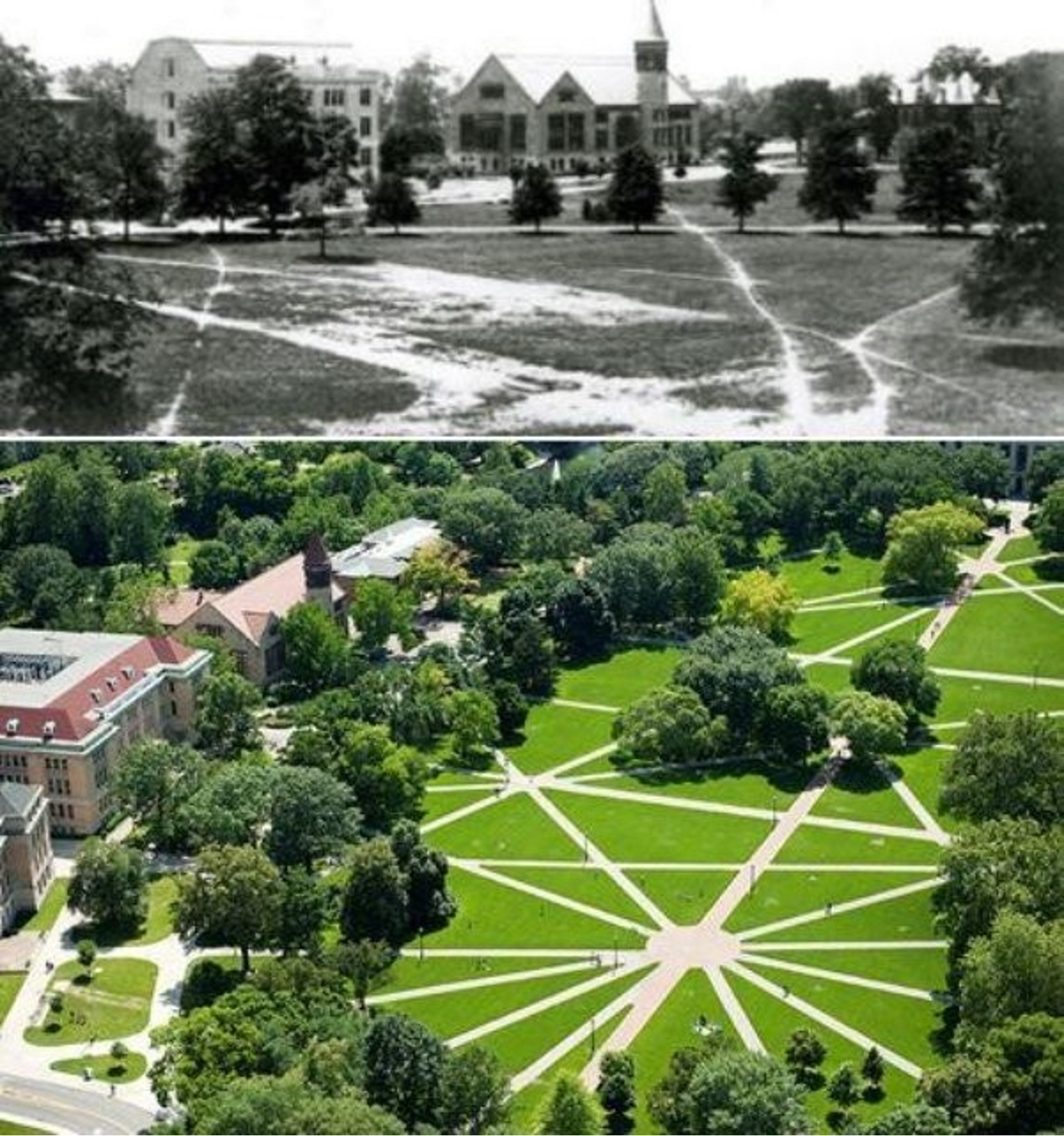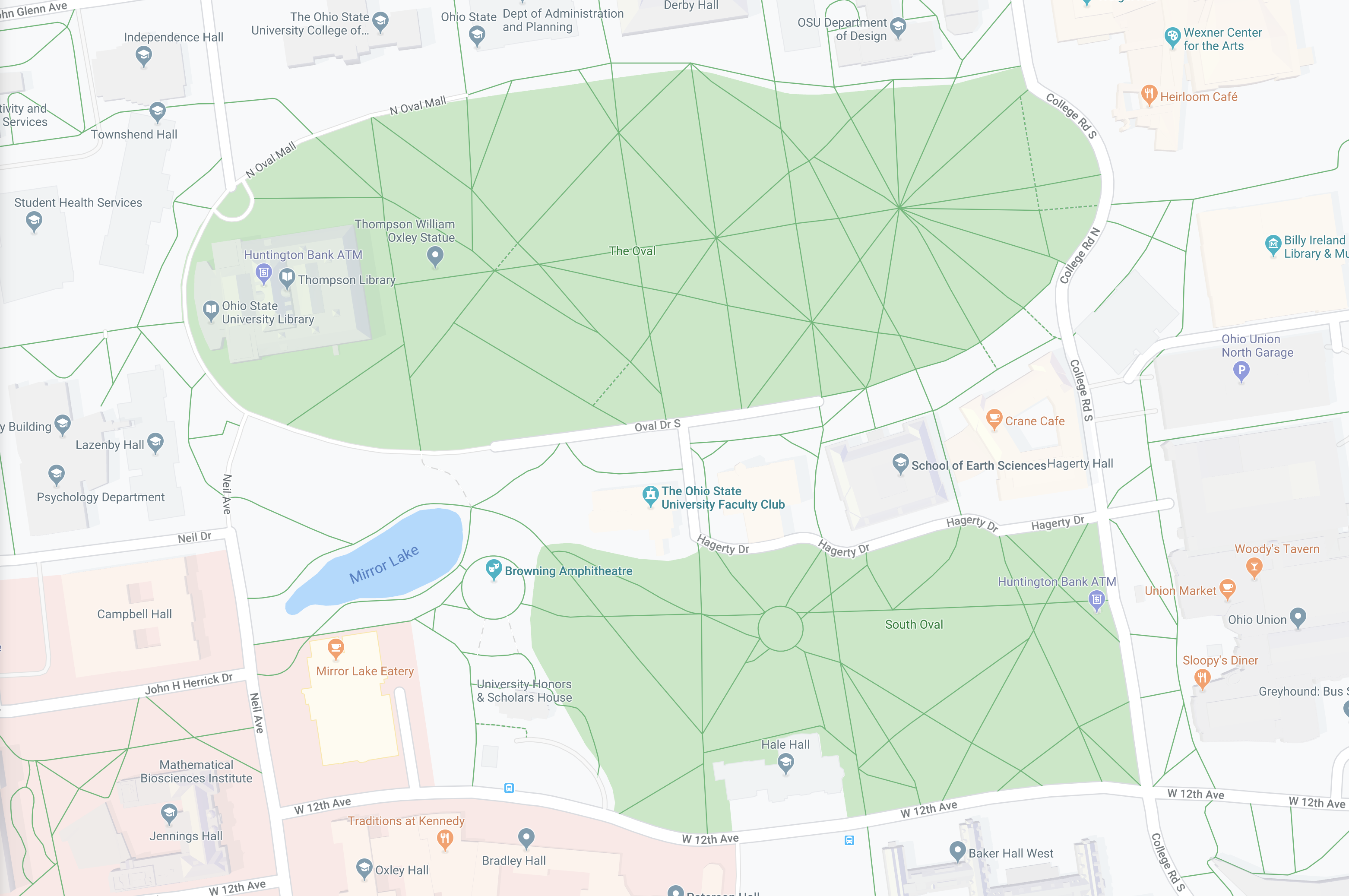


When it comes to the type of work I do, I guess I have a niche.
I work on challenging business process management projects with a lot of Dynamics, SharePoint, and workflows. Nowadays, I use Power Automate, but when I started, workflows were not so easy to build.
The majority of the projects I worked on had already failed at least once or twice before I join them.
By the time I join a project, the team is usually willing to try anything if it means it’ll help them succeed.
Invariably, when I start digging into the requirements, there is always an over-complicated workflow that must handle every possible scenario known to man.
That’s when I tell them the story of how Ohio State University designed the walkways for its campus.
The Ohio State University, founded in 1870, has an incredible 11-acre courtyard that many students and locals believe is the heart of the campus.
Locals call it “The Oval.” It is a network of pathways and landscaping and sculptures surrounded by buildings. It is a beautifully inspiring place to hang out, relax, and study.

The Oval wasn’t always the way it is today. It began as a place where livestock grazed near the library and the university hall.
In 1911, as the story goes, Joseph N. Bradford became the University’s architect.
His design for the campus landscaping was a very rigid geometric pattern of walks within the Oval. He wanted a very symmetrical design that would require changing the bordering streets to make the Oval more rectangular.
Unfortunately (or fortunately for my story), project delays and cost overruns meant that there was no money left to implement Bradford’s full design.
The landscaping crew went to Bradford to ask for his revised plans for the campus landscaping.
In response, Bradford had the crew join him in a hot-air balloon that rose above the campus.
From such a high viewpoint, they could see the paths that the students had made walking back and forth between the buildings.
Where people walked most frequently, the grass had visible indentations. As this was in the winter, the snow made the pathways even more distinctive.

The pathways were far from symmetrical. Instead, they showed the most efficient routes between buildings — something that was in itself beautiful and had an organic quality to it.
“There’s your landscaping design! Follow these pathways!” said Bradford. He took a selfie of himself and the grounds below and dropped the mike. “Bradford, OUT!!!”
Ok, that might not be exactly how it happened, but you get the gist of it.

A desire path is a path that is formed when people (or animals) choose to walk between points A and B. It often represents the most direct or most convenient way between the source and destination.
Urban planners often observe drastic differences between their designs and the real-life use of their designs.
With modern tools such as Power Automate, it can be very easy to design workflows.
Maybe too easy sometimes.
The first instinct is to design super-complicated workflows that will handle every single possible scenario — regardless of how probable the scenario is.
Sometimes, the best thing to do is to design the bare minimum workflow possible, and then step back and observe how people use the workflows.
Where are there exceptions?
Where are the delays?
Where do people make mistakes?
Do you find that the workflows start and stop in mid-flow because there is missing information that should have been captured?
Instead of trying to automate everything from the start, try to handle the most common scenarios. Then try to fix where things break most often, or where the most costly mistakes happen.
Instead of doing one giant revision of a workflow that will take you and your team months and months of work to implement, try to do multiple smaller iterations and continue to add value to your end-users and customers.
You may find that you’ll get 80% of the scenarios done with 20% of the effort.
In other words, let your users show you their desire paths and implement the workflows your organization truly needs to solve business problems — not what you thought you needed.
The Ohio State University campus story is a story I like to use to illustrate how it is better to design a simpler workflow and observe how people use your new system instead of over-complicating your process.
I largely made up the details of the story. If anyone has a more accurate depiction of the story, please let me know.